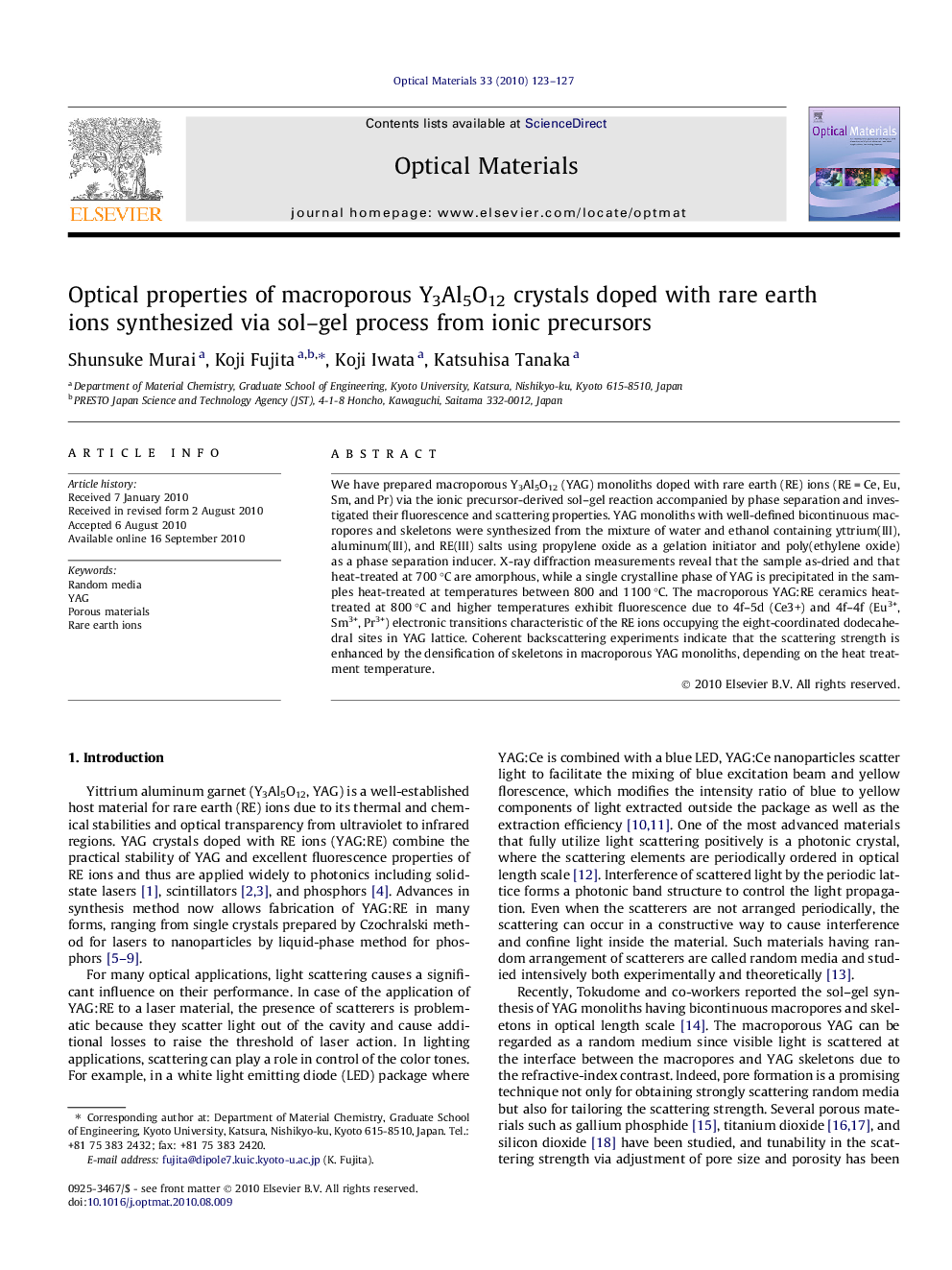| Article ID | Journal | Published Year | Pages | File Type |
|---|---|---|---|---|
| 1495755 | Optical Materials | 2010 | 5 Pages |
We have prepared macroporous Y3Al5O12 (YAG) monoliths doped with rare earth (RE) ions (RE = Ce, Eu, Sm, and Pr) via the ionic precursor-derived sol–gel reaction accompanied by phase separation and investigated their fluorescence and scattering properties. YAG monoliths with well-defined bicontinuous macropores and skeletons were synthesized from the mixture of water and ethanol containing yttrium(III), aluminum(III), and RE(III) salts using propylene oxide as a gelation initiator and poly(ethylene oxide) as a phase separation inducer. X-ray diffraction measurements reveal that the sample as-dried and that heat-treated at 700 °C are amorphous, while a single crystalline phase of YAG is precipitated in the samples heat-treated at temperatures between 800 and 1100 °C. The macroporous YAG:RE ceramics heat-treated at 800 °C and higher temperatures exhibit fluorescence due to 4f–5d (Ce3+) and 4f–4f (Eu3+, Sm3+, Pr3+) electronic transitions characteristic of the RE ions occupying the eight-coordinated dodecahedral sites in YAG lattice. Coherent backscattering experiments indicate that the scattering strength is enhanced by the densification of skeletons in macroporous YAG monoliths, depending on the heat treatment temperature.
